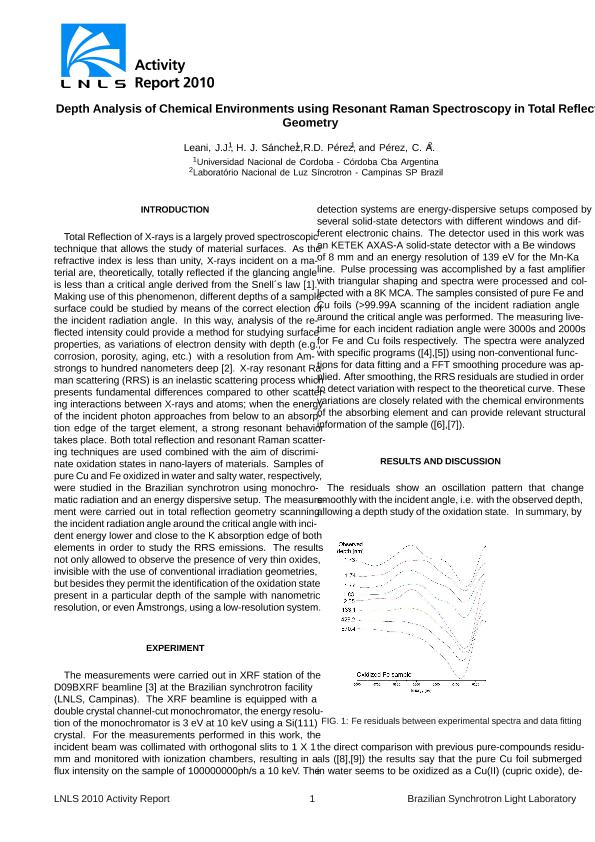Artículo
Depth Analysis of Chemical Environments using Resonant Raman Spectroscopy in Total Reflection Geometry
Fecha de publicación:
06/2010
Editorial:
Brazilian Association for Synchrotron Light Technology
Revista:
Activity Report
ISSN:
1518-0204
Idioma:
Inglés
Tipo de recurso:
Artículo publicado
Clasificación temática:
Resumen
Total Reflection of X-rays is a largely proved spectroscopic technique that allows the study of material surfaces. As the refractive index is less than unity, X-rays incident on a material are, theoretically, totally reflected if the glancing angle is less than a critical angle derived from the Snell´s law [1]. Making use of this phenomenon, different depths of a sample surface could be studied by means of the correct election of the incident radiation angle. In this way, analysis of the re- flected intensity could provide a method for studying surface properties, as variations of electron density with depth (e.g., corrosion, porosity, aging, etc.) with a resolution from Amstrongs to hundred nanometers deep [2]. X-ray resonant Raman scattering (RRS) is an inelastic scattering process which presents fundamental differences compared to other scattering interactions between X-rays and atoms; when the energy of the incident photon approaches from below to an absorption edge of the target element, a strong resonant behavior takes place. Both total reflection and resonant Raman scattering techniques are used combined with the aim of discriminate oxidation states in nano-layers of materials. Samples of pure Cu and Fe oxidized in water and salty water, respectively, were studied in the Brazilian synchrotron using monochromatic radiation and an energy dispersive setup. The measurement were carried out in total reflection geometry scanning the incident radiation angle around the critical angle with incident energy lower and close to the K absorption edge of both elements in order to study the RRS emissions. The results not only allowed to observe the presence of very thin oxides, invisible with the use of conventional irradiation geometries, but besides they permit the identification of the oxidation state present in a particular depth of the sample with nanometric resolution, or even Åmstrongs, using a low-resolution system.
Palabras clave:
Depth Analysis
,
Chemical Environments
,
Raman scattering
,
RRS
Archivos asociados
Licencia
Identificadores
Colecciones
Articulos(CCT - CORDOBA)
Articulos de CTRO.CIENTIFICO TECNOL.CONICET - CORDOBA
Articulos de CTRO.CIENTIFICO TECNOL.CONICET - CORDOBA
Citación
Leani, Juan Jose; Sánchez, H. J.; Pérez, R. D.; Pérez, C. A.; Depth Analysis of Chemical Environments using Resonant Raman Spectroscopy in Total Reflection Geometry; Brazilian Association for Synchrotron Light Technology; Activity Report; 2010; 6-2010; 3-4
Compartir




